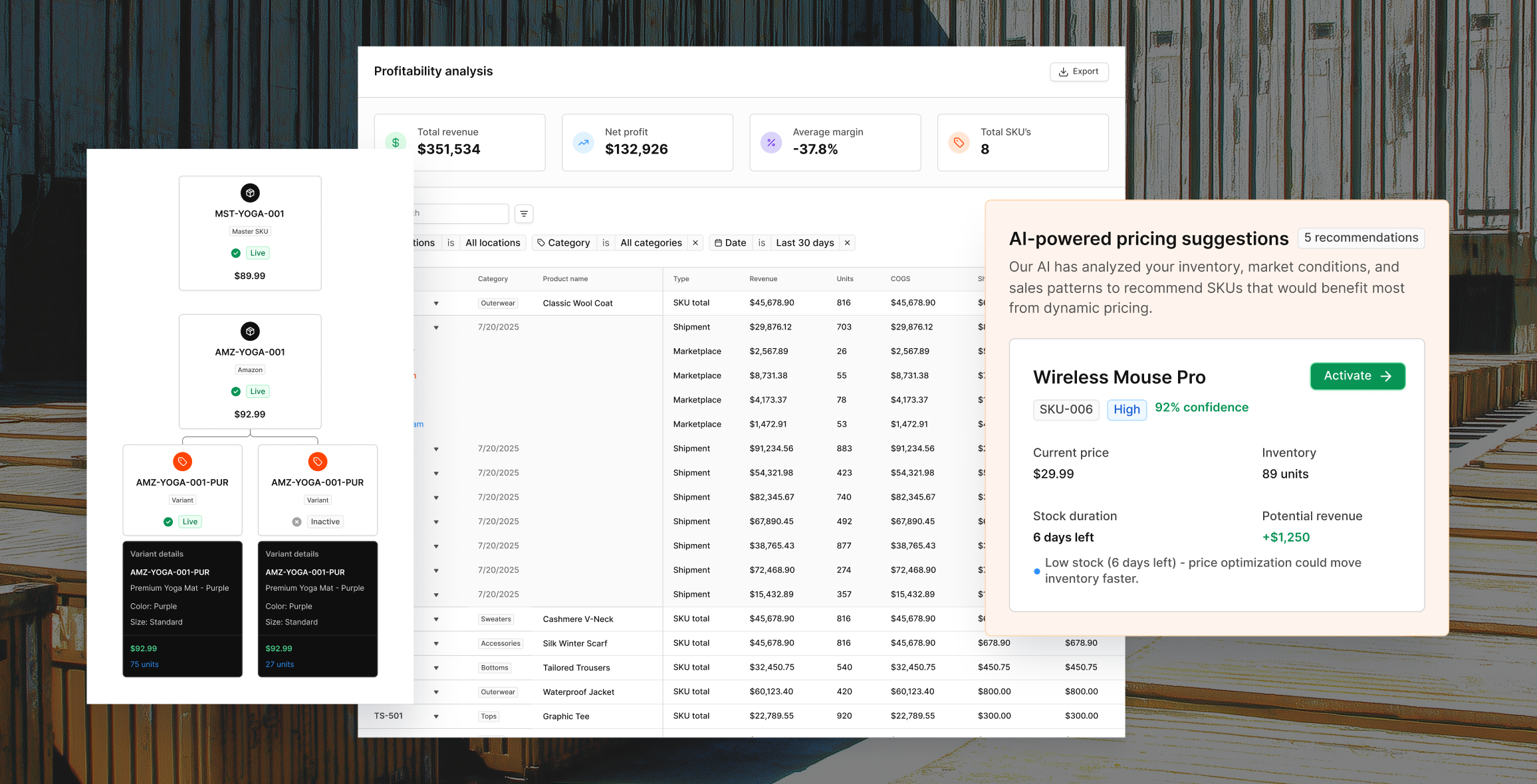From Purchase to Keep: A Modern Take on Consumer Buying Behavior



Request A Demo
Take 30 minutes to see how Redo can help you retain more revenue through a more cohesive post-purchase experience for your buyers.
Understanding why customers buy and what keeps them coming back
What makes a customer click buy now?
It’s one of the oldest questions in marketing and one that’s only getting harder to answer.
In 2025, consumer psychology isn’t static. With AI-driven recommendations, endless choices, and heightened expectations, shoppers are making faster, more emotional, and more informed decisions than ever before. But while most brands focus on what happens before checkout, the real competitive advantage comes from understanding what happens after.
Every return, exchange, and reorder reveals how customers think. When you align your marketing, product, and post-purchase strategy around those behaviors, you turn one-time buyers into loyal brand advocates.
The Four Classic Types of Consumer Buying Behavior (and Why They Still Matter)
Long before ecommerce, marketers identified four major types of buying behavior. They remain surprisingly relevant today, but the digital era has changed how each one appears across the customer experience.
Each behavior shapes not only why a customer buys but also how they evaluate satisfaction later. Understanding this mindset informs everything from messaging to product strategy.
The Missing Layer: Post-Purchase Behavior
The classical model of buying behavior ends at the moment of purchase.
Modern ecommerce does not.
Every brand now faces a fifth phase: post-purchase behavior.
After an order confirmation, customers enter a psychological loop of evaluation. They ask questions such as Did I make the right decision? or Would I buy here again?
Their answers determine whether that transaction becomes a one-time sale or the start of a long-term relationship.
In our companion piece, The 5 Phases of the Buying Process (and Why the Last One Drives Loyalty), we explore how this fifth phase has become the foundation of modern retention strategy. It’s where brands prove their value, reinforce satisfaction, and convert intent into advocacy.
For DTC and Shopify brands, this moment defines lifetime value. Every refund, exchange, and reorder reveals how customers think and what it takes to earn their trust again.
This is where Redo fits in.
Redo helps merchants understand and design for what happens next: the retention side of consumer psychology. With return and exchange automation, branded tracking, instant credit, and campaign tools for email and SMS, Redo gives teams visibility into what shapes loyalty after checkout.
By studying how people behave after they buy, brands uncover what drives confidence, repeat orders, and long-term retention.
The Four Modern Archetypes of the Ecommerce Consumer
Building on the classical types, we can identify four modern archetypes that describe how shoppers behave throughout the customer lifecycle, from first click to post-purchase.
Mapping your audience across these archetypes allows you to tailor your funnel (messaging, merchandising, and post-purchase flows) to match how customers think and decide.
How Pre-Purchase Psychology Shapes Post-Purchase Decisions
Buying and keeping are two sides of the same coin. The motivations that guide a shopper’s research, confidence, and curiosity before purchase resurface after the product arrives.
Some customers dig deeper once they have the item in hand. They re-read reviews, test features, and look for validation that they made a smart decision. Others take a careful, analytical approach from start to finish, weighing convenience, flexibility, and brand trust at every step. Loyal customers tend to move faster, but they expect consistent ease and reliability. Then there are shoppers who thrive on discovery. For them, trying new things (and occasionally returning them) is part of the fun.
These tendencies often overlap. A single customer might be analytical when purchasing technology, loyal when reordering skincare, and exploratory when browsing fashion. Recognizing these patterns allows brands to design adaptable post-purchase experiences that meet customers where they are, rather than forcing them into fixed categories.
Turning Insight into Experience: Where Redo Fits In
Understanding these blended motivations is only the first step. The next is translating them into experiences that build trust and loyalty long after checkout.
Modern Shopify brands are using Redo to do exactly that:
- Reassure detail-oriented shoppers with transparent order updates, helpful onboarding, and branded tracking pages that reinforce product value.
- Support analytical decision-makers by offering clear options and friction-free exchanges that make them feel in control.
- Delight habitual buyers with automation and small rewards that strengthen the sense of reliability.
- Re-engage exploratory customers with dynamic recommendations and swap suggestions inside the exchange flow.
When post-purchase interactions mirror the same mindset that guided the original purchase, customers feel understood. The goal is not simply to resolve returns efficiently. It’s to create experiences that confirm confidence in the brand and invite customers back again.
Measuring the Impact of Behavioral Design
When you design around consumer psychology, success goes beyond simple conversion metrics.
With Redo, you can measure how those behavioral insights translate into loyalty and revenue, giving your team full visibility into what happens after checkout.
Key KPIs to track (and how Redo helps you improve them):
- Exchange vs. Refund Ratio
- Track how often customers choose to exchange instead of refund.
- Redo’s exchange-first logic and built-in incentives let you turn potential losses into retained revenue in real time.
- Repeat Purchase Behavior
- Understand how post-purchase experiences influence whether customers buy again.
- Redo’s analytics surface which return outcomes such as exchanges or instant credit correlate with higher re-engagement.
- Average Time to Resolution
- Monitor how long it takes to complete a return or exchange.
- Redo automates approvals, notifications, and workflows so every return feels instant, not administrative.
- Customer Satisfaction (CSAT or NPS)
- Gauge how post-purchase experiences affect trust and perception.
- With Redo’s feedback collection and integration options, you can see how each return type impacts satisfaction scores.
- Post-Return Outcomes
- Measure the health of return events without overstating behavioral tracking.
- Redo reports exchange rate, instant-credit usage, and return reasons by SKU or policy, and it shows campaign engagement for Redo Email and Redo SMS. Use these signals to build re-engagement audiences in your marketing tools.
Analyzing these metrics through the lens of buyer behavior shows which mindsets your brand attracts and where your post-purchase experience can evolve.
Redo’s analytics give you the visibility and control to act on those insights confidently.
Avoiding Behavioral Blind Spots
Even thoughtful retention strategies can fail if they miss behavioral nuance. Redo’s flexibility is built to prevent these pitfalls:
- Over-automation can alienate Researchers and Analyzers who value personal reassurance. Use conditional rules to decide which returns get human review and which can be automated safely.
- Strict, one-size-fits-all policies can break trust with high-value Loyalists. Create flexible policies in Redo that adapt by product type, order value, or return reason to reward your best customers with smoother exchanges.
- Explorers and Loyalists expect different experiences. Redo lets you customize automation rules based on product type, order value, or return reason to give each customer a more relevant resolution path.
- Feedback loops are often ignored. Redo captures return reasons and customer sentiment automatically, giving you the data to refine products and marketing.
The most successful brands treat behavioral understanding as an ongoing practice. Redo provides the tools to keep that loop running: measure, adjust, and optimize with every customer interaction.
The Takeaway: Empathy Scales Better Than Discounts
Understanding why people buy has always been central to marketing. What has changed is how that understanding must extend beyond the sale.
Your customers are not just making a purchasing decision. They are making an emotional investment. Each click, return, or reorder communicates something about what they value.
Redo gives you the visibility and flexibility to respond to those signals in real time, turning insight into experience.
Brands that design for empathy win twice: first at checkout, and again when the customer chooses to stay.
Key Insight
The last phase is not the end of the journey. It is the proof that keeps customers moving forward.
About Redo
Redo helps ecommerce brands turn post-purchase moments into lasting relationships.
Use AI-powered return flows, exchange-first logic, instant credit, and analytics to understand not just what customers bought, but why they come back.








